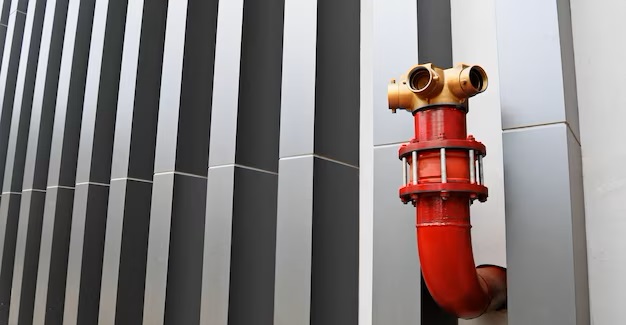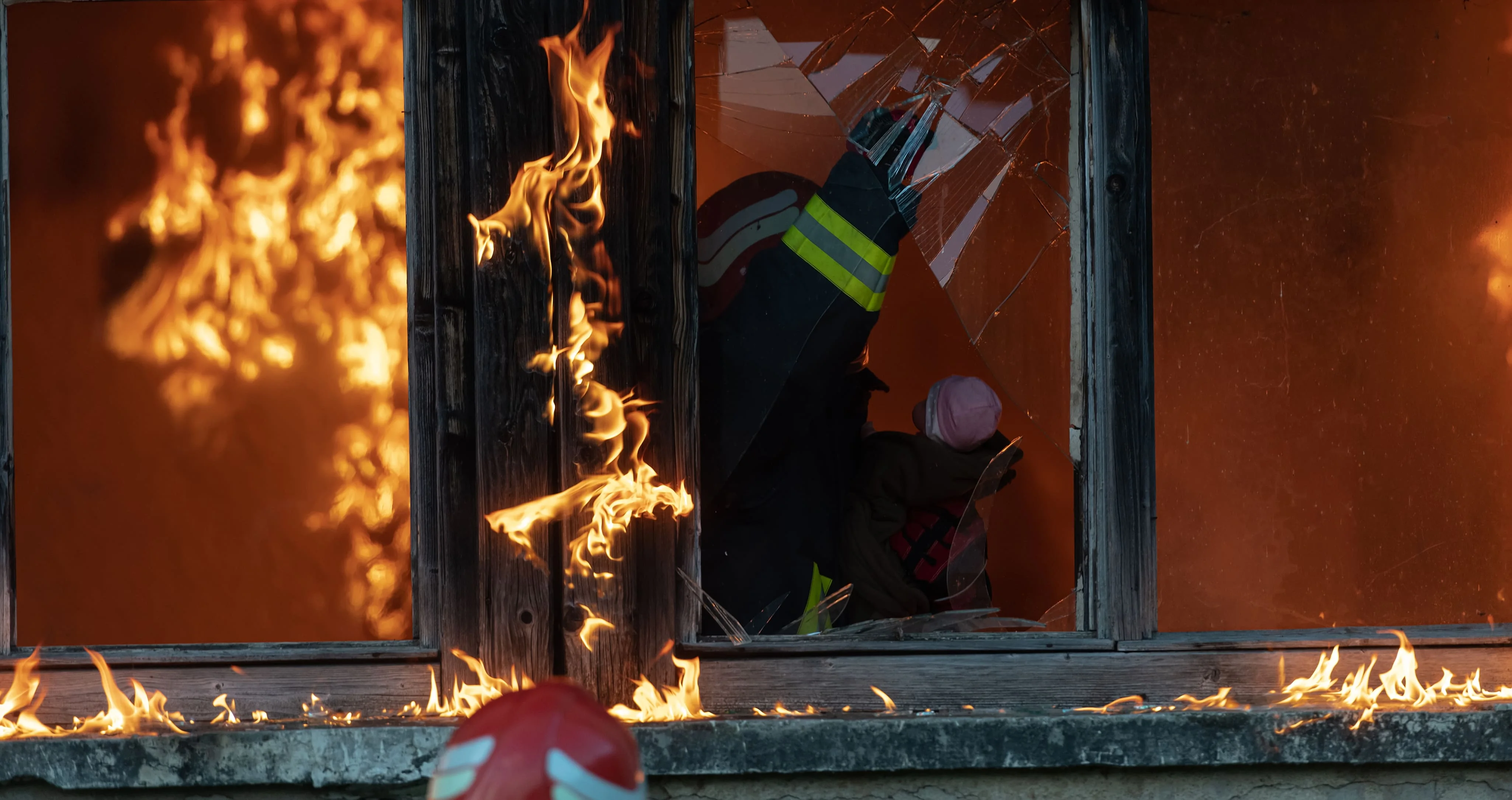Fire Investigation Procedures: A 7-Step Guide


Standards like NFPA 1321, NFPA 921 and 1033 provide an established framework for investigators to accurately determine the origin and cause of fires. These fire investigation procedures ensure consistency across investigations. In this guide, we’ll outline the seven steps that professionals should follow when conducting any type of fire investigation.
Table of Contents
This fire investigation procedure guide covers all the necessary protocols and techniques that professionals should follow when conducting an investigation, from establishing safety protocols to conducting a preliminary examination to evidence collection.
When fire investigation professionals arrive at a fire scene, their first task is to ensure the area is secure and safe. This step is crucial for both the investigators' safety and the preservation of evidence. They must act immediately and systematically to establish safety protocols that are in line with the guidelines set out by the NFPA 1321.
This standard is a critical resource that dictates how to approach the scene, assess potential hazards such as structural damage or chemical risks, and set up barriers to prevent unauthorized access. An organized and methodical approach helps to avoid further damage or loss and ensures that the evidence collected is admissible in court. Fire Investigation Units (FIUs) play a key role, and following NFPA 1321 is integral to their operations, from the initial response to the final documentation of the fire and explosion investigation scene.
The preliminary examination is a vital first step in fire investigation. It involves a careful look at burn patterns and possible sources of ignition to pinpoint the fire's point of origin. It's important to approach this task methodically, as outlined in the NFPA 921 standards.
This helps investigators avoid the top 6 missteps in fire investigation, such as making hasty conclusions without adequate evidence. Instead, investigators must carefully document evidence, understand the fire's behavior, and consider all possible scenarios. Following a systematic approach not only supports the accuracy of the investigation but also upholds the credibility of the findings.
Documenting a fire scene is a critical step in fire investigation procedure and techniques. It involves a detailed and systematic approach to capturing the scene exactly as it is found. Investigators take photographs from multiple angles to provide a visual record, sketch the scene to note the positions of key items, and take comprehensive notes that describe the condition of the scene and any observations that might be relevant.
This documentation creates a permanent record that can be revisited throughout the investigation. To streamline this process, Blazestack offers a robust platform designed specifically for fire investigators. This platform simplifies the organization and preservation of evidence, ensuring that all details are meticulously recorded and easily accessible for review or reporting purposes.
Collecting and keeping evidence safe is a key part of looking into a fire cause and analysis. It's important to pick up, save, and list physical evidence the right way. It’s also important to maintain a chain of custody must be kept to protect the integrity of the evidence and to ensure it is admissible in court.
Here are a few key points to keep in mind:
- Collect evidence without damaging it.
- Put evidence into appropriate containers that keep it safe.
- Write down where everything was found and who touched it.
- Use the right steps to make sure evidence stays the same over time.
NFPA 1321 is a good resource for learning more about safety measures, evidence handling, and preservation.
Interviewing witnesses is a critical step in the fire investigation process. It involves careful questioning to elicit accurate and helpful information. An investigator must be skilled in both the art of conversation and the science of observation. Strategies for effective interviewing include establishing rapport, asking open-ended questions, and being attentive to non-verbal cues.
Fire investigators can utilize Blazestack, a specialized fire investigation case management platform to streamline this process. This tool allows for the systematic recording and management of witness statements, ensuring that all testimonies are documented and easily accessible for review. Blazestack's interface is designed for efficiency, with features that support screen-reader modes and other accessibility options, making it a reliable resource for investigators committed to thorough and ethical fire investigation practices.
After investigators collect all the evidence from a fire scene, they begin the detailed work of analysis. They look at everything from char patterns to the presence of accelerants. Then, they match these findings with witness statements and expert insights to understand how the incident unfolded. It's a bit like solving a puzzle.
Correlating evidence is key to forming a solid hypothesis about the fire's cause. Investigators may also turn to advanced technology and specialized platforms to help ensure their analysis is accurate and thorough. This careful examination helps to create a narrative of the fire, which is crucial for determining the origin and cause of the fire.
After thorough investigation and analysis, the final step is to compile a comprehensive report that details every finding, analysis, and conclusion from the fire scene. This report is critical as it communicates the investigator's work to stakeholders, such as insurance companies, law enforcement, and legal teams. Blazestack simplifies this process by providing a platform where investigators can log and document each aspect of their investigation, ensuring nothing is overlooked. The platform's structured approach helps in creating clear, concise, and organized reports which can be easily presented.
Blazestack's features are designed to assist in producing reports that are accurate and professional, thereby aiding in the effective communication of the fire investigation's outcomes.
From specialized tools and techniques to case management platforms, investigators today have access to a lot of resources that make it easy to comply with NFPA standards. Follow the steps outlined in this guide and review some of our other resources to master the fire investigation procedure.
It’s also important for FIUs to have set policies and procedures for each of these steps for team members to follow to ensure consistency and efficiency for each investigation. Blazestack can simplify this complex process by providing a robust set of tools to help you log, report, and document fire investigations seamlessly. Request a free trial today to see what the platform can do for your organization.
What are the common challenges faced by fire investigators?
Fire investigators often encounter challenges such as complex fire patterns, limited evidence due to severe fire damage, and distinguishing accidental fires from intentional ones. Environmental factors and witness reliability can also pose difficulties. Staying updated with best practices, evolving fire terminology, and leveraging technology are vital for overcoming these obstacles.
How has technology impacted modern fire investigations?
Technology has significantly enhanced fire investigations with tools like advanced fire modeling software, drones for aerial photography, and digital evidence collection. These technologies help investigators analyze fire scenes more accurately and efficiently, leading to better understanding of fire behavior and causes.
Why is compliance with NFPA standards crucial in fire investigations?
Compliance with NFPA 1033 and NFPA 921 is essential as they provide a systematic approach and best practices for fire and explosion investigations. Adherence to these standards ensures a high level of proficiency and safety, helping to avoid common missteps in the investigation process.
Trusted by Public and Private Investigator Teams Everywhere
Whether you're a big state agency, a small local fire department or somewhere in between, Blazestack software (NFPA 921® & CJIS compliant) collects fire scene data and generates standardized origin and cause reports in a fraction of the time of other methods.
To learn more about Blazestack, give us a call at (866) 303-4344 or email us at support@blazestack.com
Get Your Free 14-Day Trial and Custom Price Quote Now
We'll let Blazestack do the talking. Try it out right now for free.
A member of our staff will be in touch shortly.


